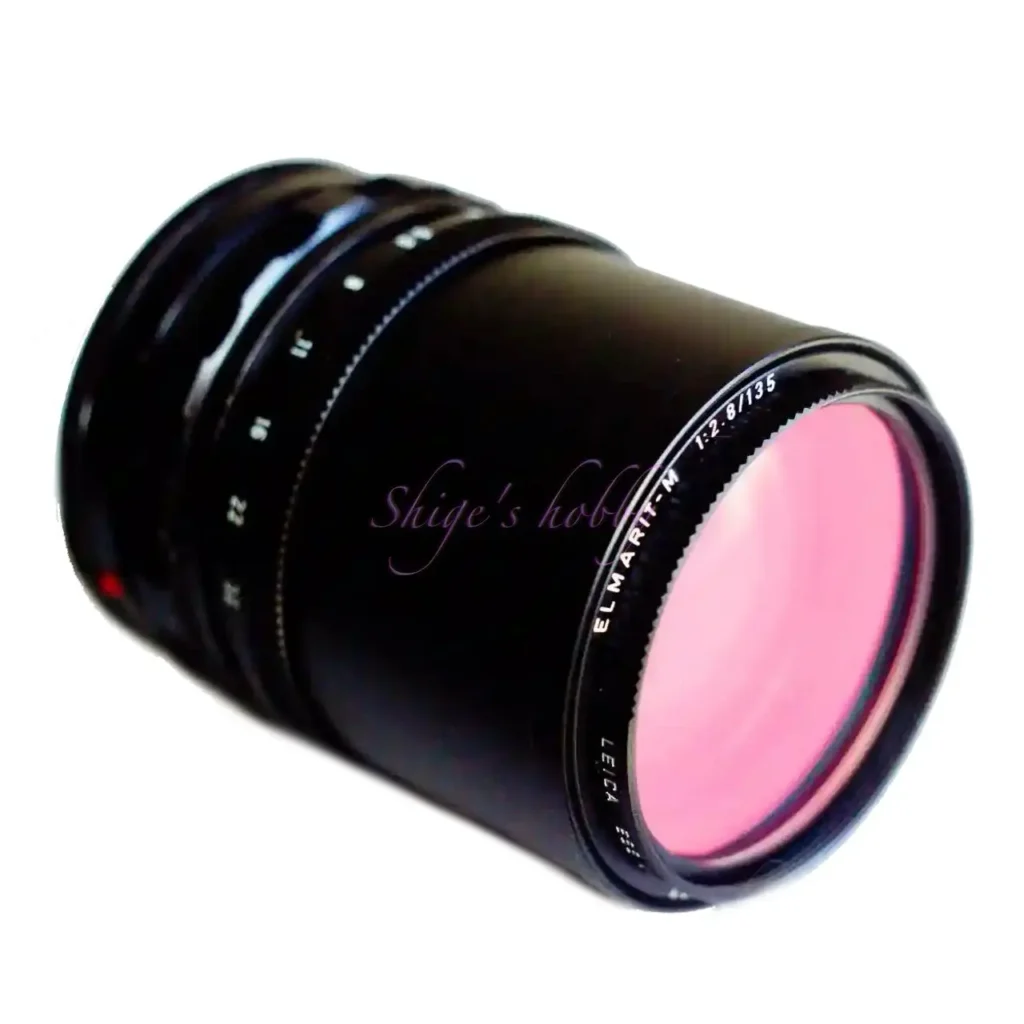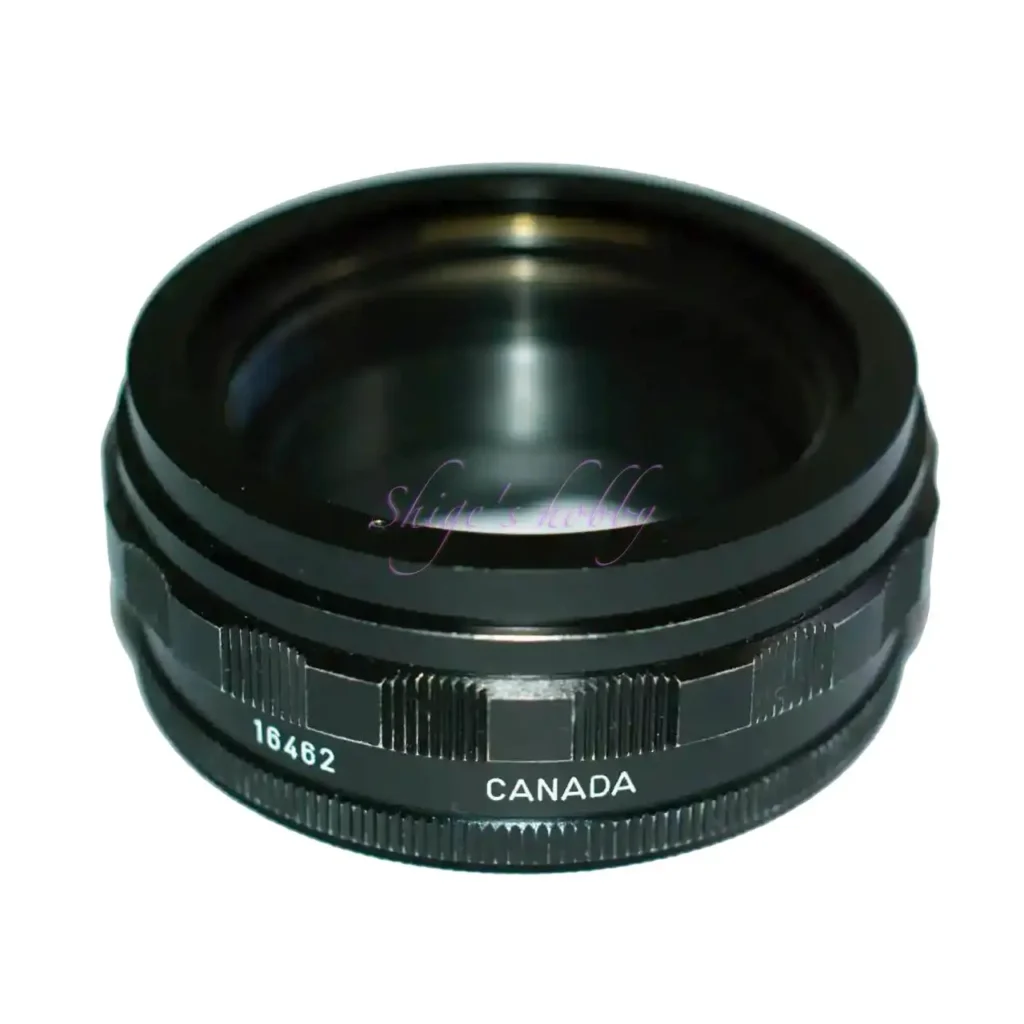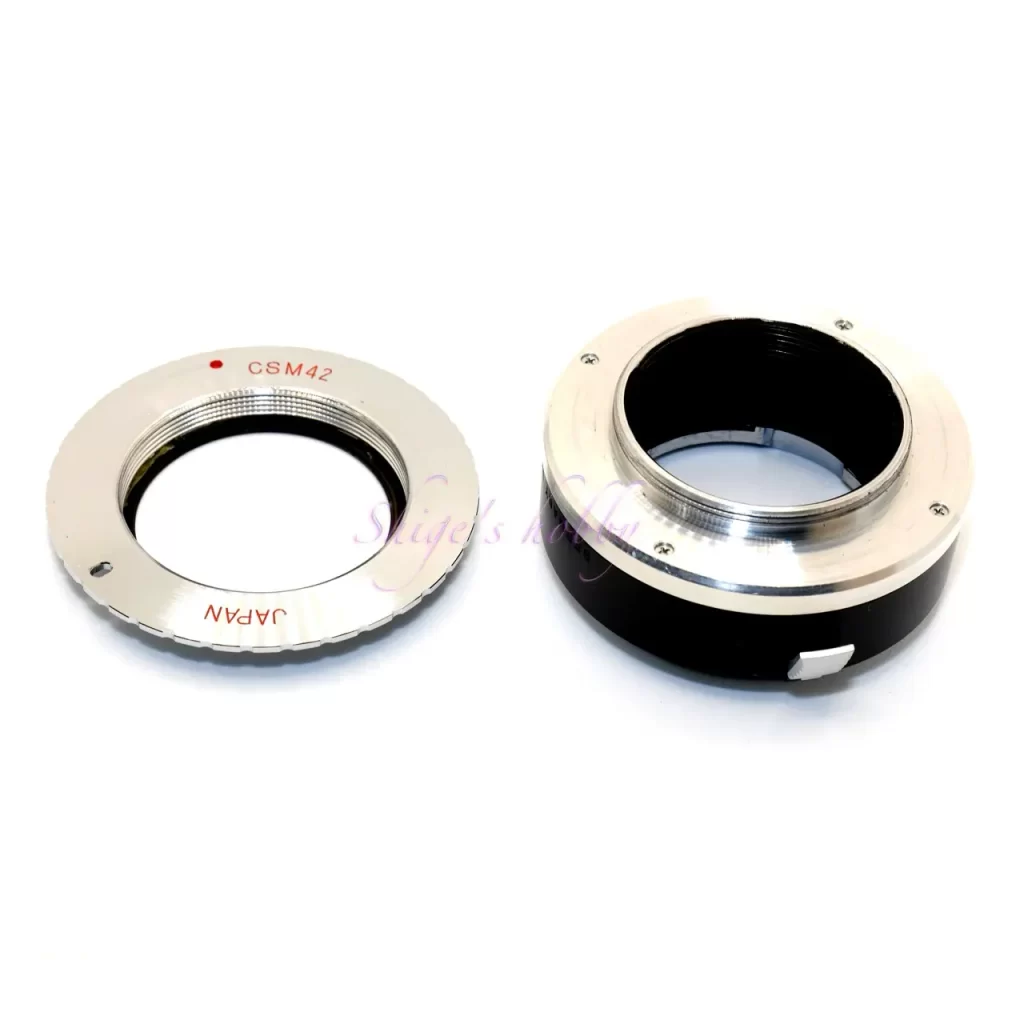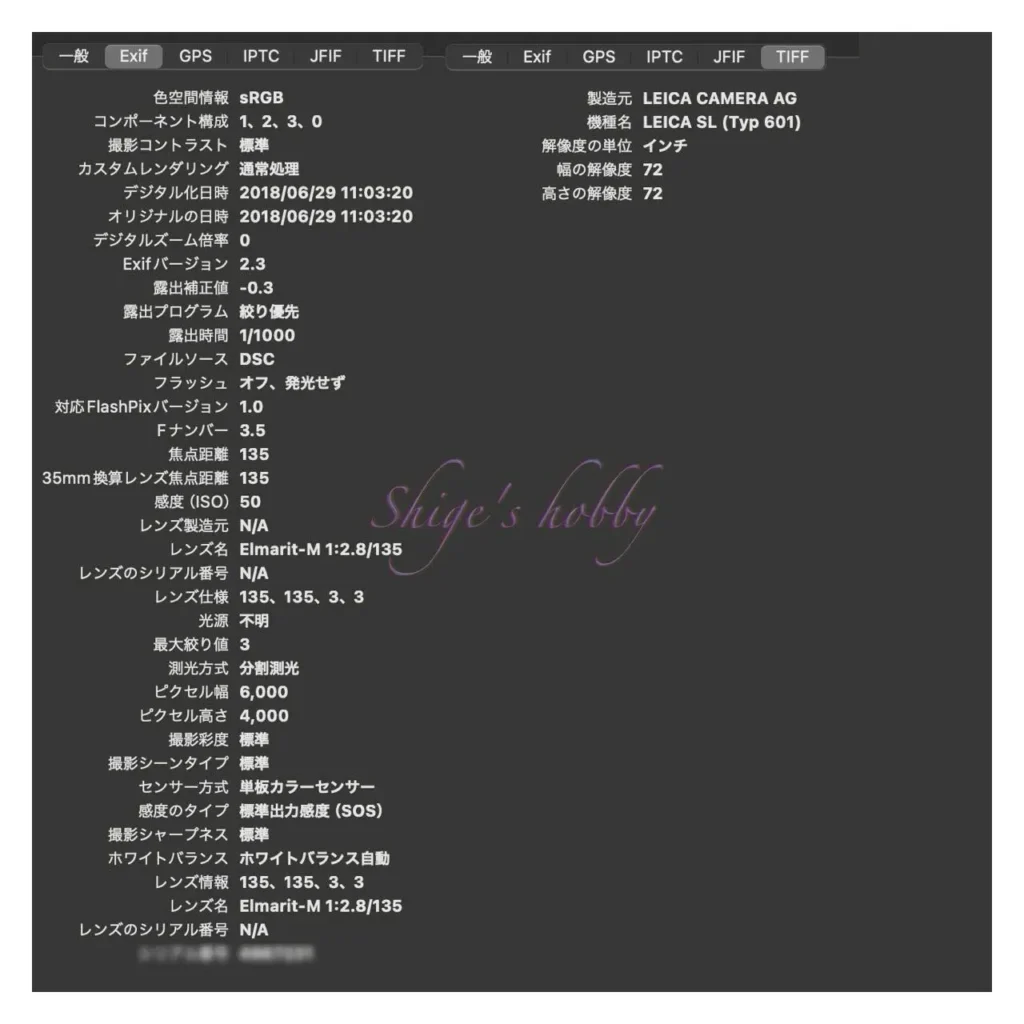A review and photo examples of the LEICA ELMARIT M 135mm F2.8 converted to a LEICA M9 digital rangefinder camera and Visoflex M mount and used with digital SLR and mirrorless cameras.
- Please see the disclaimer regarding advertising here.
- Italicized links in the text are advertisement links that take you to other sites.
Table of contents
Gallery
The sample photos were taken with the following cameras:
- LEICA M9
- SIGMA SD1 Merrill
- LEICA SL Typ601
- Click on the photo to enlarge

Review
1.Overview
The ELMARIT M 135mm F2.8 is a Leica M-mount telephoto lens released in 1974.
The main specifications are listed below, with details provided in the table.
- Maximum aperture: f/2.8
- Lens construction: 4 groups, 5 elements
- Aperture blades: 9
- Minimum focusing distance: 1.5m
- Leica M rangefinder camera rangefinder: 1.5m
- Hood: Built-in
- Filter diameter: 55mm
- Lens color: Black
It can be converted to a VISOFLEX-M mount using the ZOOEP 16462 helicoid, which is also used with the SUMMICRON 90mm.
The ELMARIT 135mm f/2.8 M-mount version comes in two models: an early model (I) and a later model (II), each with a different lens configuration. The lens used here is the later model (II).

2.Usability
The ELMARIT M 135mm f/2.8 comes standard with a pair of magnifying glasses for Leica M-type rangefinders. While I don’t have any exterior photos, I used it with a Leica M9, so I’ve included some sample images. The photo above shows the lens mounted in a VISOFLEX-M mount, combining the lens head, ZOOEP helicoid, and 16462.
I’ll write my impressions of each camera below.
The LEICA M9 can be fitted with the M mount, and the viewfinder glasses allow you to capture a larger subject. However, the double image overlap of a rangefinder camera makes it difficult to accurately focus the 135mm f/2.8. Additionally, the lens’s weight makes it less balanced with the camera’s shutter release, making it prone to camera shake.
As long as you focus correctly and avoid camera shake, this lens can fully utilize the capabilities of the 18-megapixel 35mm full-frame sensor.
The macro shot of a hydrangea captures its delicate petals beautifully. Mount Fuji in the distance appears slightly out of focus and affected by camera shake.
When using the ELMARIT M 135mm with the SIGMA SD1, it is converted to a VISOFLEX-M mount, and then attached to the camera via an adapter modified from the 14127, which converts the VISOFLEX-M mount to a Leica R mount, to an M42 mount, using the CSM-42, which converts the M42 mount to a SIGMA-SA mount.

The SD1 is a digital SLR camera equipped with an APS-C sensor, which means its focal length in 35mm format is equivalent to 203mm (1.5 times 135mm). Its 15-megapixel triple-layer sensor offers arguably the highest resolution among 15-megapixel cameras equipped with APS-C sensors. The small sensor size avoids the negative peripheral areas of the lens, and instead allows for the best imaging quality in the center, fully utilizing the potential of the 15-megapixel triple-layer sensor.
However, determining the focus point can be difficult, and while the primary reason for this is the photographer’s lack of skill, the Sigma viewfinder itself isn’t particularly appealing, so there are times when it’s difficult to adjust the focus. This is a more noticeable drawback when using an electronic viewfinder.
The LEICA SL Typ601 is connected to the camera using a 14127 adapter, which converts the VISOFLEX-M mount to a Leica R mount, and a LEICA R-Adapter-L (16076), which converts the Leica R mount to an L mount.
Using the LEICA R-Adapter-L (16076) allows the name of the lens used to be recorded in the Exif file.

Thanks to the 0.66-inch, 4.4-megapixel EyeRes finder, focusing is easier than with rangefinder cameras or SLR cameras.
The SL typ601 is equipped with a 24-megapixel 35mm full-frame sensor, while the M9 has 18 megapixels and the SIGMA SD1 has a triple-layer FOVEON sensor, but considering that their actual pixel count is 15 megapixels, the SL typ601 has the most.
Looking at the sample image, the lotus flowers, including the background, are rendered delicately, but the background of the swan is starting to swirl slightly. Lenses up to around 20 megapixels are fully practical.
3.Summary
In conclusion, to summarize the ELMARIT M 135mm F2.8 is the fastest and largest aperture lens among the Leica M 135mm focal length lenses.
It generally produces high-resolution images, but at wide open aperture, the background can appear swirly in some scenes.
Because it is a long focal length and bright lens, it is difficult to use with a rangefinder camera. With an SLR camera, the clarity of the viewfinder is directly related to ease of use. With a mirrorless camera, it is preferable to use one with a high-resolution electronic viewfinder.
Specifications, considerations, etc.
Like the M-mount version, the ELMARIT 135mm F2.8 is available in early (I) and later (II) models for the R-mount, and the lens configuration differs between the early (I) and later (II) models.
There are four types of lens in total, and the early M-mount and R-mount models have the same lens configuration, while the later models also have the same lens configuration. For Leica 135mm F2.8 lenses, there is no difference in lens configuration between the M-mount and M-mount as long as they were manufactured at the same time.
| 項目 | Elmarit-M 135mm f/2.8 | Elmarit-R 135mm f/2.8 |
| 焦点距離(mm) | 135 | 135 |
| 最大絞り | 2.8 | 2.8 |
| 最小絞り | 32 | 32 |
| 絞り羽根 | 12(Typ-I M-Mount) 9(II) | 8(Typ-I R-Mount) 8(II) |
| レンズ構成 | 4群5枚 | 4群5枚 |
| 最短撮影距離(m) | 1.5 | 1.5 |
| レンズ長(mm) | 120(Typ-I M-Mount) 114(Typ-II M-Mount) | ?(Typ-I R-Mount) 93 |
| レンズ最大径(mm) | 66(Typ-I M-Mount),(Typ-II M-Mount) | ?(Typ-I R-Mount) 67(Typ-I R-Mount) |
| フィルター径(mm) | ?(Typ-I M-Mount) 55(Typ-II M-Mount) | Series IV(Typ-I R-Mount) 55(Typ-II M-Rount) |
| 重量(g) | 730(Typ-I M-Mount) 735(Typ-II M-Mount) | 638(Typ-I R-Mount) 730(Typ-II R-Mount) |
| リリース年 | 1963(Typ-I M-Mount) 1974(Typ-II M-Mount) | 1964(Typ-I R-Mount) 1968(Typ-II R-Mount) |
Reference links
- LEICA ELMARIT M 135mm F2.8・LEICA WIKI
- LEICA M9・Shige’s hobby
- SIGMA SD1 Merrill・Shige’s hobby
- LEICA SL Typ601・Shige’s hobby
Affiliate links
- LEICA lens・Ads by Amazon
- Leica books・Ads by Amazon

Update history
- 2025.11.19



Be First to Comment